Imagine living in a home that not only helps saves the planet but also saves you money. Net zero homes can do just that.
These innovative dwellings are designed to produce as much energy as they consume during the course of a year, resulting in less environmental impact and significantly reduced utility bills versus a standard home.
But to pull this off, these ultra-efficient homes require some special design techniques and features.
These are innovative, affordable homes we’re talking about, but the great thing is that they use tested, off-the-shelf technology and design techniques that the average homeowner can understand. And now, you can even buy pre-drawn net zero house plans, which can potentially save you significant time and expense.
Achieving the net-zero goal mostly comes down to just 12 key features
In this article, I will discuss these dozen features that help transform net zero homes from an ambitious concept into a tangible reality.
By understanding these essential elements, you can make informed decisions when considering the construction of your own home. Even if you aren’t able to go full net-zero, you can apply any of these techniques to make life in your home incrementally better.
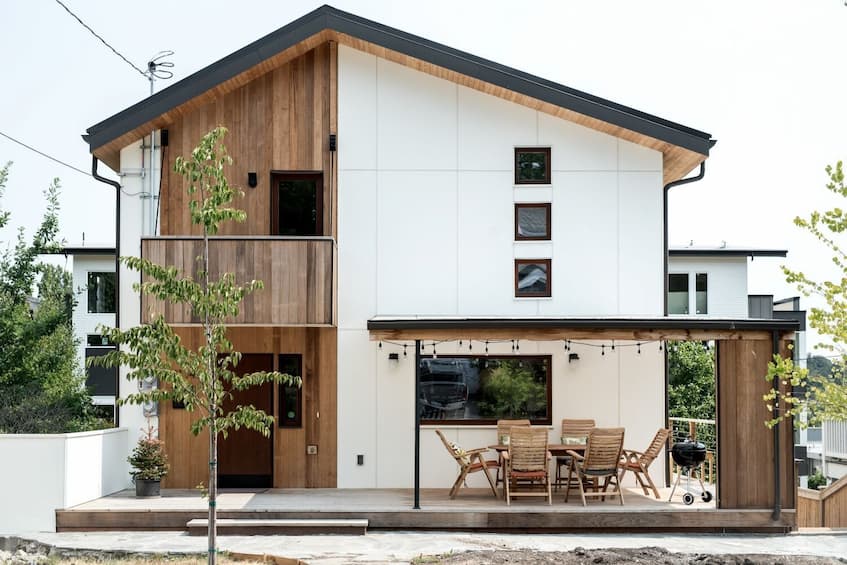
1. Simple Design for Enhanced Efficiency
Net zero homes are built upon the principle of simplicity. By adopting a streamlined design approach, we optimize the building’s performance. A home that is shaped like a rectangle or a cube has less surface area than a more sprawling design. Minimizing unnecessary gables and bump-outs also has the added benefit of reducing the possibility of water intrusion, and it makes the structure more durable and less expensive to build. Likewise, we try to design modestly sized interior spaces, which require power to condition, and maximize outdoor living areas.
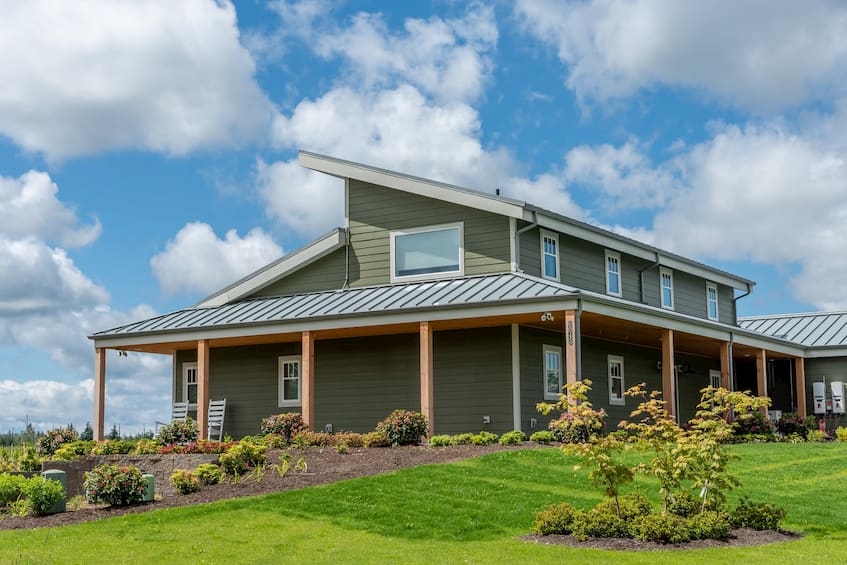
2. Strategic Orientation for Passive Solar Gain
The orientation of a net zero home plays a vital role in maximizing efficiency. Ideally, the building should be aligned to capture the sun’s natural light and heat. In the Northern Hemisphere in latitudes where winters get cold, the widest part of the house with the most windows should be oriented to face south. South-facing windows are advantageous because they receive the most sunlight throughout the day, facilitating passive solar gain.
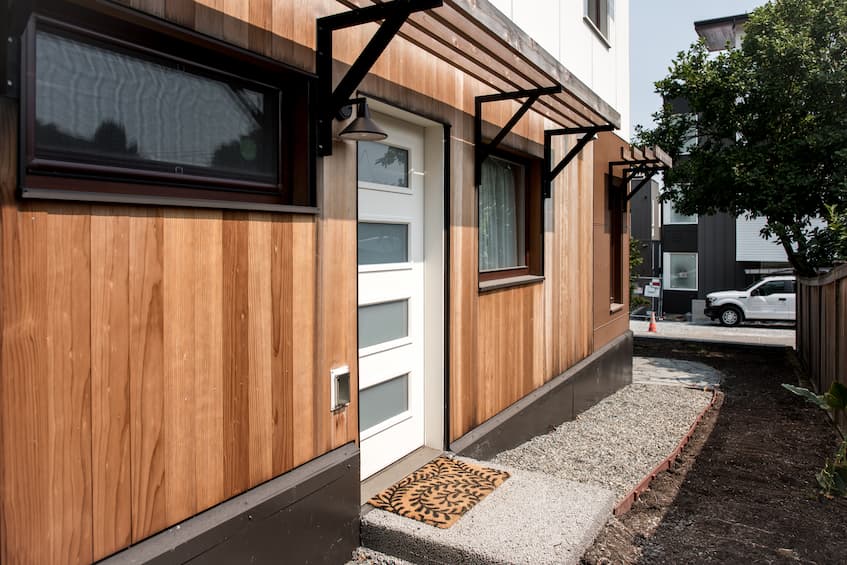
3. Window Placement for Optimal Sunlight and Heat
Carefully positioned windows are paramount to harnessing the power of the sun. It’s all about avoiding summer overheating but still maximizing winter “solar harvest.”
South-facing windows with appropriate glazing capture sunlight in the colder months, while overhangs or awnings (fixed or moveable) can help shade the interior during the summer months, preventing overheating. Generally, windows facing north should be minimized. Balancing window size, placement, and shading is crucial to maximizing efficiency and maintaining a comfortable indoor environment.
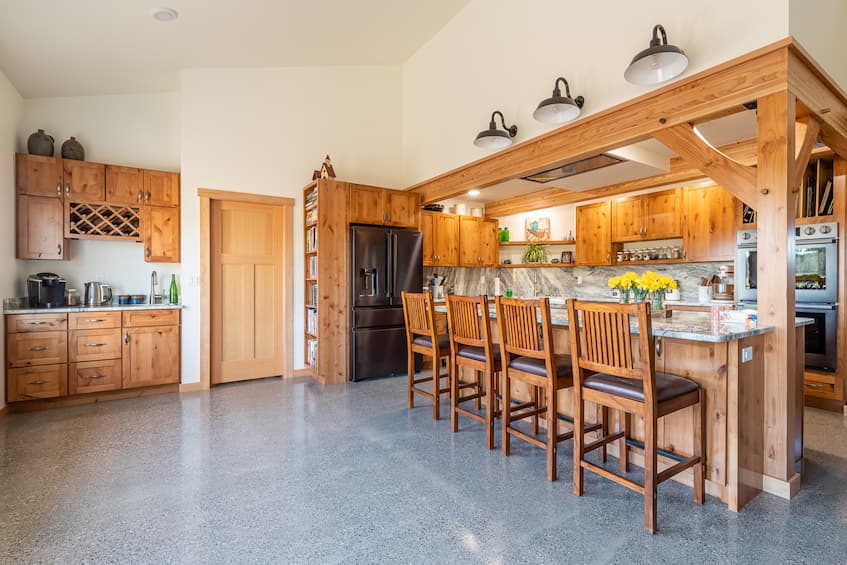
4. Thermal Mass for Temperature Regulation
Thermal mass materials, such as concrete, stone, or even just a couple layers of drywall, are incorporated into the structure of net zero homes to regulate temperature fluctuations. These materials absorb and store heat during the day, gradually releasing it when the sun sets, maintaining a stable and comfortable interior temperature. The process works in reverse as well: If you open your windows to let in the cool night air and then draw your shades during the heat of the day, your well-insulated home will stay cool, the thermal mass acting almost like the ice in a cooler.
The strategic placement of thermal mass elements optimizes the effectiveness of this energy-saving feature. In my own home, we had a polished concrete main floor that was stained a dark color that could soak up the sun’s warm rays in the winter and gradually release it all night.
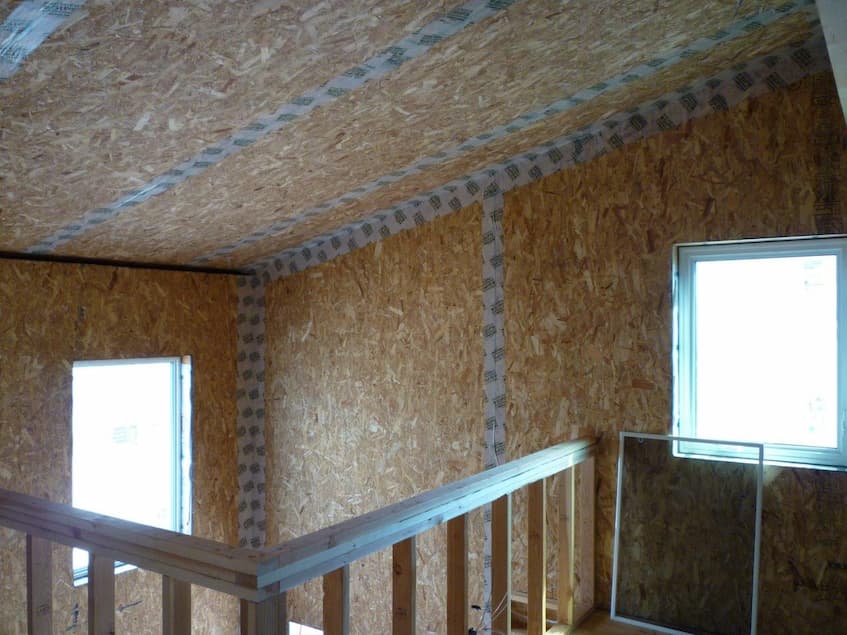
5. Air Sealing for Energy Conservation
Ensuring a tightly sealed building envelope is essential to prevent unwanted air leakage, which can result in energy loss and compromised indoor air quality. Proper air sealing techniques, including insulation, gap sealing, and vapor barriers, create a well-insulated and airtight home, minimizing energy waste and enhancing overall efficiency.
At Powerhouse, we design all of our homes to use structural insulated panels (SIPs), one advantage of which is excellent and simple air-sealing using special adhesive seam tapes, caulks, and mastic.
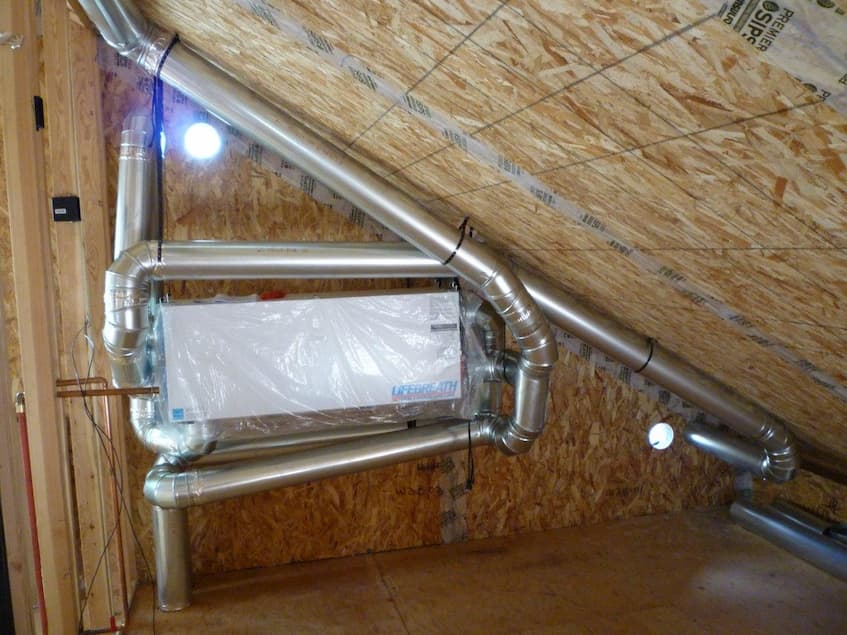
6. Heat Recovery Ventilation Systems for Fresh Air Exchange
Ventilation is essential for maintaining a healthy indoor environment, but it can also lead to energy losses. Heat recovery ventilation (HRV) systems address this challenge by capturing and transferring heat from the outgoing stale air to the incoming fresh air. This process minimizes energy waste, ensures a constant supply of clean air, and optimizes energy efficiency.
HRVs have a fan that actively circulates air. As the fresh air is pulled into your home, it passes over a heat exchanger that pre-conditions it with the heat (or cool) of the stale air that’s being exhausted outside. The effect is similar to cracking a window in every room of your home, but without losing much of your precious heat or air-conditioning.
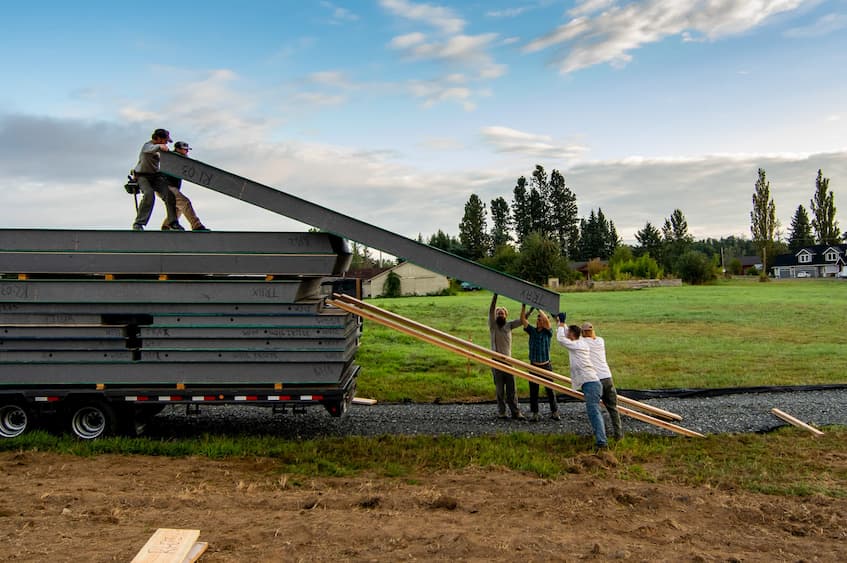
7. High-Quality Insulation for Thermal Comfort
Well-insulated walls, roofs, and floors are fundamental to minimizing heat transfer and reducing the reliance on mechanical heating and cooling systems. Utilizing high-quality insulation materials on all six sides of the home, such as the expanded polystyrene (EPS) of SIPs panels (or spray foam or cellulose), creates a thermal barrier that keeps the interior comfortable year-round, while significantly lowering energy consumption.
At Powerhouse, we typically designs our homes with R29 walls and R49 roofs. The insulated concrete forms (ICFs) around and under the slab foundation are R24.
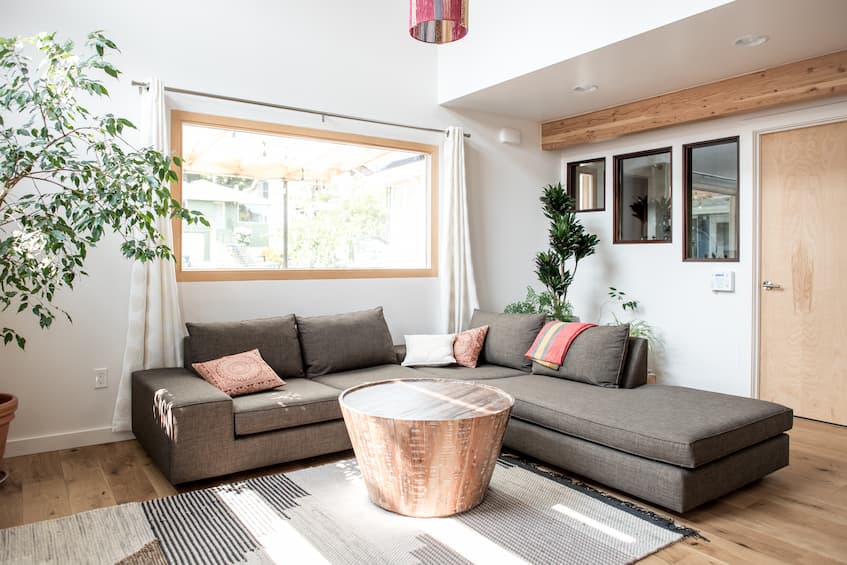
8. Energy-Efficient Windows and Doors for Climate Control
Energy-efficient windows and doors are integral to the overall performance of net zero homes. Double or triple glazing, low-emissivity coatings, and insulated frames minimize heat transfer, reducing the need for excessive heating or cooling. These features ensure a comfortable indoor environment while maximizing energy savings. How well a window insulates is measured by its “U-value,” and the lower the number the better. We typically specify highly efficient triple-pane vinyl windows with U-values between 14 and 16.
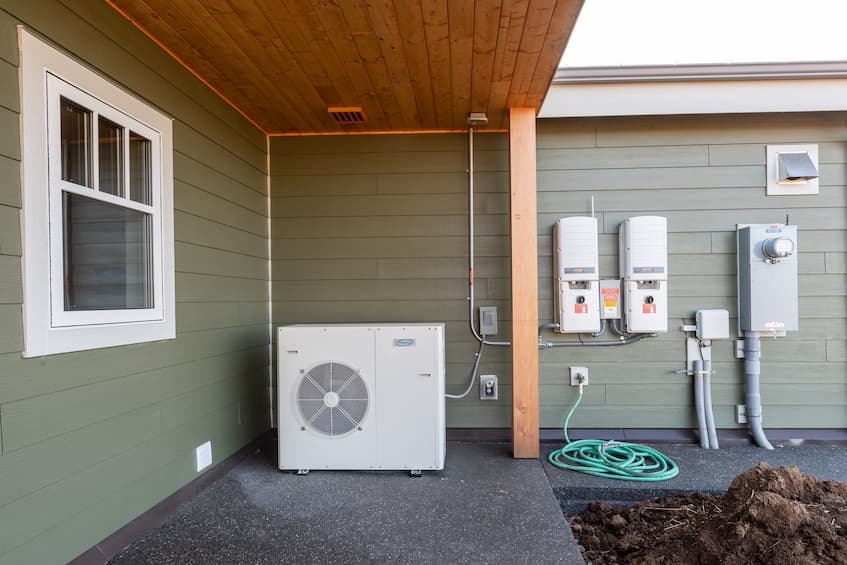
9. Heat Pumps for Efficient Heating and Cooling
Heat pumps offer a highly efficient alternative to traditional heating and cooling systems. By extracting heat (usually from the air but sometimes from the ground, or water), heat pumps consume less energy, making them ideal for net zero homes. They provide effective climate control while significantly reducing energy consumption and environmental impact.
They are so efficient, in fact, that greenhouse gas emissions of a home heat pump are less than they would be for a gas-fired furnace, even in areas that rely heavily on coal-fired electricity generation. That’s because heat pumps can deliver two to four times as much heating energy as the electricity they consume. And as the technology matures, air source heat pumps are now viable as the primary heat source even in the coldest parts of the United States.
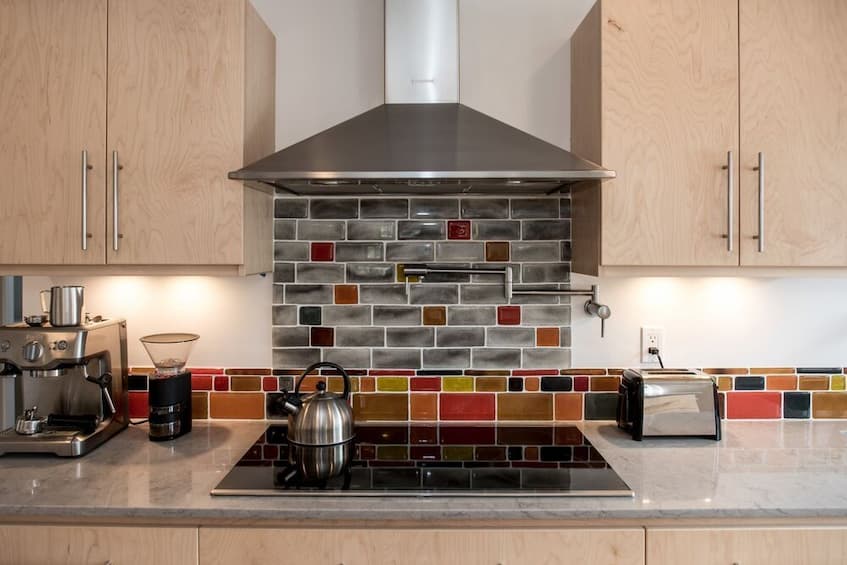
10. Energy-Efficient Lighting and Appliances for Reduced Consumption
Opting for energy-efficient lighting fixtures and appliances significantly reduces energy consumption in net zero homes. LED lighting, Energy Star-rated appliances, and smart home systems that optimize energy usage contribute to a more sustainable and efficient household, resulting in long-term energy savings.
Look for a refrigerator with thick walls and doors that is at the top of the Energy Star efficiency chart. An electric heat pump dryer and water heater can also save significant energy. And a front-loading washing machine and water-efficient dishwasher can reduce the need for energy-intensive hot water. Plus, don’t forget about the good old fashioned clothesline!
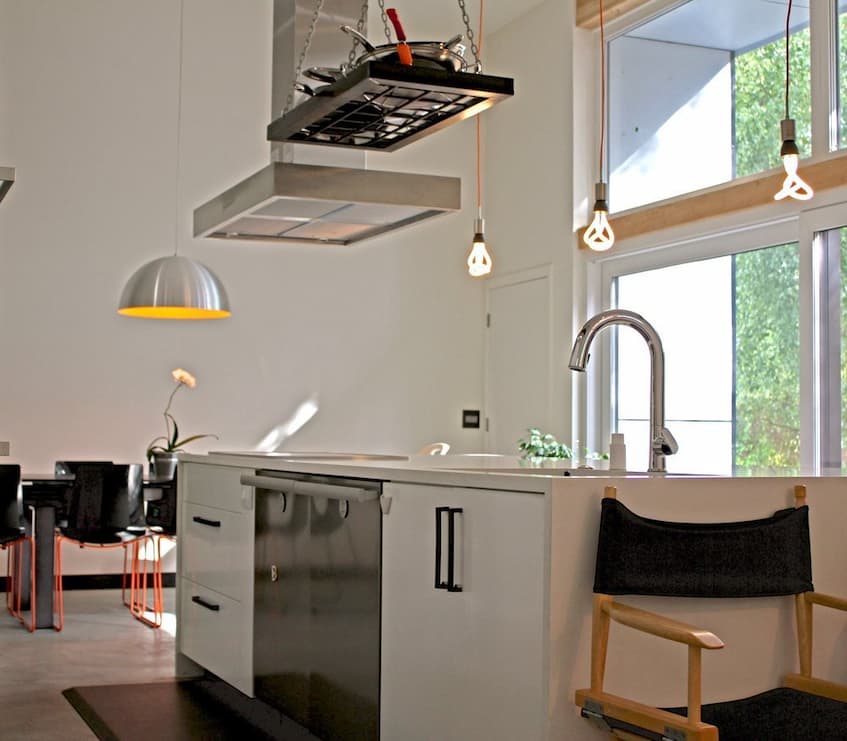
11. Water-Efficient Fixtures for Sustainable Resource Management
Water efficiency is a crucial aspect of net zero homes. Installing low-flow fixtures, dual-flush toilets, and water-saving shower heads and faucets helps conserve water resources and reduces the energy required for water heating. These simple adjustments minimize both water and energy waste without compromising comfort or functionality.
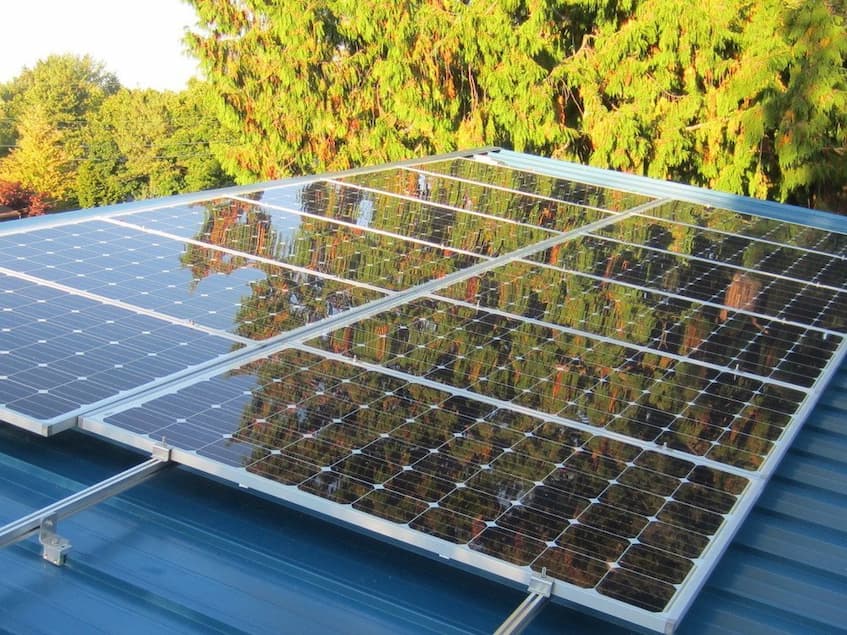
12. Solar Panels for Clean, Renewable Energy Generation
The crowning jewel of net zero homes is the installation of solar panels. Harnessing the sun’s abundant energy, these panels convert sunlight into clean, renewable electricity. They offset all of the home’s energy needs, potentially allowing for excess power to be fed back into the grid, leading to reduced or even eliminated electric bills while supporting a sustainable future. There is one caveat, your local utility must make provisions for net metering. As of 2017, 38 states had mandatory net metering rules.
Notice that I put solar panels last on the list. Merely adding solar to an inefficiently designed home won’t get you to net-zero. That’s why it’s so important to pay attention to the first 11 net zero features on this list.
We’re Happy to Help
At Powerhouse Designs, we embrace the potential of net zero homes to create sustainable and efficient living spaces.
Whether you choose our ready-made net zero house plans or require a custom design tailored to your specific needs, our team of knowledgeable designers is here to guide you every step of the way. Building a net zero home is an inspiring journey that positively impacts both your lifestyle and the environment. Contact us today to start down your own net zero path!
